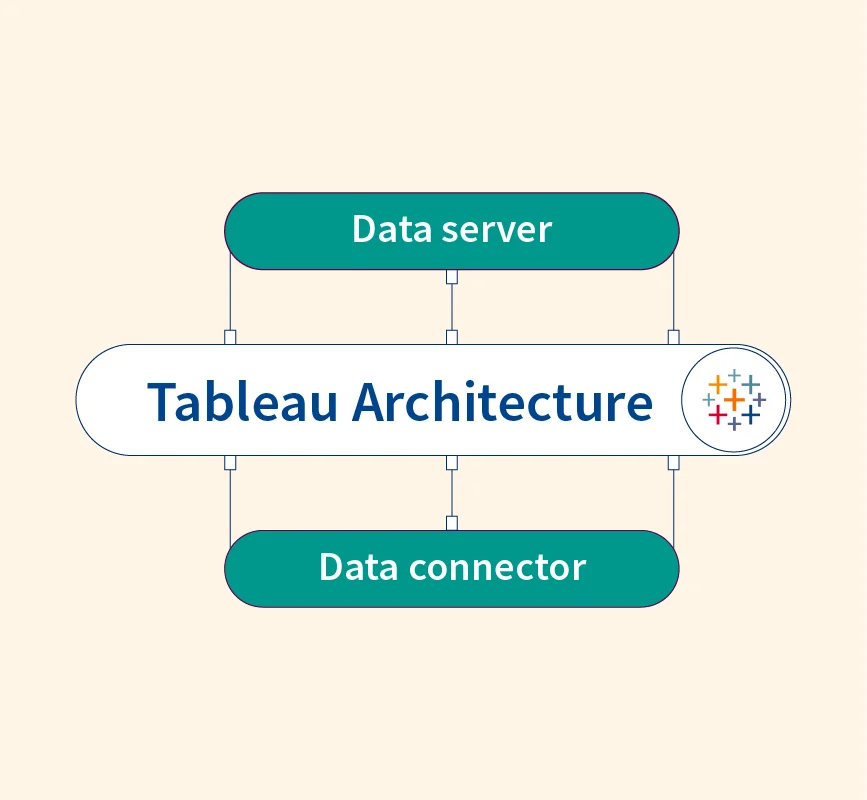Machine learning (ML) has transformed industries by providing powerful tools for data analysis and prediction. However, its development and widespread adoption are hindered by several challenges. From the quality of training data to the complexity of models and their deployment, these issues can significantly impact the success of machine learning applications. Addressing these problems is crucial for improving model performance and ensuring that machine learning systems deliver accurate, fair, and actionable insights. This article explores the most common issues in machine learning and provides strategies to overcome them.
Common Issues in Machine Learning
Despite its potential, machine learning faces several challenges that can hinder model performance and limit its real-world applicability.
1. Inadequate Training Data
One of the primary challenges in machine learning is the availability of adequate training data. Machine learning models require large amounts of high-quality data to learn effectively. However, in many domains, obtaining such data is difficult due to factors like privacy concerns, costs of data collection, and data sparsity.
When the training dataset is too small, models can struggle to capture meaningful patterns, resulting in poor performance on unseen data. This problem becomes particularly pronounced in fields like healthcare, where collecting large, diverse datasets is challenging.
Solutions:
- Data Augmentation: Techniques such as data augmentation, which artificially increases the size of the dataset by modifying existing data, can help mitigate the problem of limited data.
- Synthetic Data Generation: Tools like GANs (Generative Adversarial Networks) can generate synthetic data to expand training datasets.
- Transfer Learning: Transfer learning allows models to leverage knowledge from other related tasks, reducing the need for large amounts of data.
Addressing the challenge of inadequate training data is essential for building robust and accurate machine learning models.
2. Poor Quality of Data
The quality of data directly impacts the performance of machine learning models. Poor-quality data, which may be incomplete, noisy, or inconsistent, can lead to inaccurate predictions and flawed outcomes. Data preprocessing is a crucial step to ensure that data is clean and ready for analysis.
Common Issues in Data Quality:
- Missing Values: Gaps in data can cause models to make incorrect predictions.
- Outliers: Extreme values can skew the model’s understanding of normal behavior.
- Noisy Data: Unreliable or incorrect data points can reduce the accuracy of the model.
Best Practices for Data Quality:
- Data Cleaning: Techniques like imputation (filling missing values) and outlier detection are essential for improving data quality.
- Normalization and Scaling: Ensuring that data is on a consistent scale can improve the model’s ability to learn patterns.
- Feature Engineering: Creating new features from existing data can provide the model with more meaningful information.
Ensuring high-quality data through proper preprocessing steps is key to improving model performance.
3. Non-Representative Training Data
Non-representative training data occurs when the training dataset does not accurately reflect the real-world distribution of data. This can result in models that perform well on the training data but fail to generalize to new, unseen data.
Consequences:
- Poor Generalization: Models trained on biased or unrepresentative data may perform well in controlled environments but poorly in real-world applications.
- Bias in Predictions: If the training data is not representative, the model’s predictions will be biased toward certain outcomes, potentially leading to unfair or inaccurate results.
Solutions:
- Data Sampling: Use stratified sampling techniques to ensure the training dataset accurately reflects the distribution of the target population.
- Cross-Validation: Employ cross-validation methods to test the model’s generalization capabilities across different subsets of the data.
Addressing non-representative data is essential for ensuring that models can make accurate predictions in real-world scenarios.
4. Overfitting and Underfitting
Overfitting occurs when a machine learning model becomes too complex and fits the noise in the training data rather than the underlying patterns. This results in poor generalization to new data. Underfitting, on the other hand, occurs when a model is too simple to capture the underlying patterns in the data.
Causes:
- Overfitting: Caused by models with too many parameters or when there is insufficient regularization.
- Underfitting: Occurs when the model is too simple or lacks the capacity to capture complex patterns.
Strategies to Address Overfitting and Underfitting:
- Cross-Validation: Regularly test models on unseen data during training to prevent overfitting.
- Regularization Techniques: Methods like L1 and L2 regularization can prevent the model from becoming too complex.
- Early Stopping: Stop the training process when the model’s performance on a validation set starts to degrade, preventing overfitting.
Balancing model complexity is essential to avoid both overfitting and underfitting, ensuring optimal model performance.
5. Monitoring and Maintenance
Once a machine learning model is deployed, continuous monitoring is essential to ensure that it remains accurate and relevant. As the data landscape changes, models may begin to drift from their original performance levels.
Challenges:
- Model Drift: Over time, changes in the data distribution can lead to model performance degradation, a phenomenon known as model drift.
- Retraining Needs: Models require periodic updates and retraining to ensure they continue to deliver accurate predictions as new data becomes available.
Solutions:
- Automated Monitoring: Implement monitoring systems to detect when a model’s performance starts to decline.
- Scheduled Retraining: Regularly retrain models using new data to keep them up to date.
Effective monitoring and maintenance strategies are critical for ensuring that machine learning models remain accurate over time.
6. Data Bias
Data bias occurs when the training data used to build a model is not representative of the broader population, leading to biased predictions. This can result in models that discriminate against certain groups or fail to generalize to all users.
Examples:
- Gender Bias in Hiring Models: Algorithms trained on biased hiring data may favor one gender over another, perpetuating inequalities.
- Facial Recognition: Systems trained predominantly on lighter-skinned individuals often fail to accurately identify people with darker skin tones.
Detecting and Reducing Bias:
- Bias Detection Tools: Tools like IBM AI Fairness 360 can help identify and reduce bias in machine learning models.
- Diverse Training Data: Ensuring that the training dataset includes diverse examples can help mitigate bias.
Addressing data bias is critical for building fair and equitable machine learning models, especially in industries like healthcare, finance, and criminal justice.
7. Lack of Explainability
Many machine learning models, especially deep learning models, are often described as “black boxes” due to the difficulty in understanding how they make decisions. This lack of explainability presents challenges in industries where transparency is crucial, such as healthcare and finance.
Consequences:
- Regulatory Compliance: In some industries, regulations require that models provide clear explanations for their decisions. Lack of explainability can hinder the adoption of machine learning in these fields.
- Trust: Without understanding how a model arrives at a decision, stakeholders may be reluctant to trust its predictions.
Methods to Improve Explainability:
- LIME (Local Interpretable Model-agnostic Explanations): LIME explains individual predictions by approximating the model locally.
- SHAP (SHapley Additive exPlanations): SHAP values provide insights into how each feature contributes to a prediction.
Improving explainability is essential for increasing trust in machine learning models and ensuring compliance with industry regulations.
8. Lack of Skilled Resources
The demand for skilled machine learning professionals far exceeds the available supply, creating a skills gap that slows the adoption of machine learning technologies.
Impact:
- Delayed Adoption: Organizations may struggle to implement machine learning solutions due to a lack of qualified personnel.
- Increased Costs: The scarcity of skilled professionals drives up salaries, making it costly for organizations to hire and retain talent.
Solutions:
- Education and Training: Companies can invest in training programs and partnerships with universities to upskill their current workforce.
- Collaborations: Partnering with data science institutes and offering internships can help build a pipeline of talent.
Closing the skills gap is crucial for accelerating the adoption of machine learning technologies across industries.
9. Process Complexity of Machine Learning
The development and deployment of machine learning models can be complex, requiring expertise in data preprocessing, model selection, and hyperparameter tuning. Scaling these processes for larger datasets or diverse use cases adds to the challenge.
Challenges:
- Data Preparation: Preprocessing large, complex datasets requires significant time and effort.
- Model Scaling: Adapting models to handle larger datasets or real-time applications can be difficult.
Solutions:
- Automated Machine Learning (AutoML): AutoML platforms automate many of the tasks involved in building machine learning models, reducing the complexity of the process.
- Pipeline Automation: Automating data pipelines can streamline the process of moving from data collection to model deployment.
Simplifying the machine learning workflow through automation tools can help overcome the complexity of the process.
10. Slow Implementations and Results
Implementing machine learning models and obtaining actionable results can be a slow process, particularly for complex algorithms or large datasets.
Causes:
- Data Processing Delays: Preprocessing large datasets can take significant time.
- Complexity of Algorithms: Models like deep learning often require large amounts of computational resources, leading to delays.
Solutions:
- Parallel Computing: Using distributed computing frameworks like Apache Spark can speed up data processing and model training.
- Simplified Models: In some cases, simpler models can deliver faster results without sacrificing accuracy.
Streamlining the model-building process and optimizing algorithms for efficiency can help reduce the time it takes to implement machine learning solutions.
11. Irrelevant Features
Irrelevant or redundant features in the training data can negatively impact model performance. These features add noise, increase computational costs, and may lead to overfitting.
Solutions:
- Feature Selection: Techniques like Principal Component Analysis (PCA) and Lasso regression help reduce the number of features by selecting the most relevant ones.
- Domain Knowledge: Leveraging domain expertise can help identify which features are likely to be relevant and which can be discarded.
Reducing irrelevant features improves model accuracy and efficiency, leading to better results and lower computational costs.
12. Getting Bad Recommendations
Recommendation systems are widely used in platforms like e-commerce and streaming services. However, these systems can provide bad recommendations due to data inaccuracies, user behavior changes, or poorly designed algorithms.
Consequences:
- User Dissatisfaction: Poor recommendations can lead to a negative user experience, reducing engagement and customer retention.
- Loss of Revenue: Inaccurate recommendations can impact business outcomes by driving users away from the platform.
Solutions:
- Collaborative Filtering: Collaborative filtering techniques analyze user behavior to provide more personalized recommendations.
- Reinforcement Learning: Reinforcement learning allows recommendation systems to adapt and improve over time by learning from user feedback.
Improving recommendation systems with advanced algorithms can enhance user experience and drive better business outcomes.
Conclusion
Machine learning offers transformative potential, but several challenges must be addressed to fully harness its capabilities. From the quality of training data to the complexity of models and the lack of skilled resources, these issues can hinder the development and deployment of machine learning solutions. However, with proper strategies—such as data preprocessing, model regularization, and the use of explainable AI—many of these challenges can be overcome. By addressing these issues, organizations can build more robust, fair, and efficient machine learning systems that deliver meaningful results in real-world applications.
References:
- What Are the Top 10 Challenges of Machine Learning? – Addepto Blog
- Issues in Machine Learning – Scaler Topics
- What Is Machine Learning (ML)? | IBM


